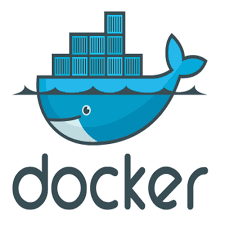10 Best Threat Intelligence Solutions Shortlist
Here's my pick of the 10 best software from the 25 tools reviewed.
Our one-on-one guidance will help you find the perfect fit.
In the ever-evolving world of cybersecurity, ransomware, firewalls, and indicators of compromise (IOCs) consistently challenge organizations. I've discerned the criticality of threat intelligence solutions, whether they're on-premise or SaaS-based. Tools like eXtended Detection and Response (XDR) and Endpoint Detection and Response (EDR) not only fortify against threat actors but also streamline workflows in Security Operations Centers (SOCs). Drawing from multiple sources, these tools offer a comprehensive view of your security posture, aiding security analysts in fending off data breaches and enhancing threat management.
What Are Threat Intelligence Solutions?
Threat intelligence solutions serve as specialized cybersecurity tools that transform raw data feeds into actionable intelligence data to address external threats preemptively. These solutions bolster security information and event management by synthesizing data from various formats and sources, these solutions bolster security information and cater to diverse use cases.
Modules in such platforms can be tailored to specific tasks, and open-source options further expand adaptability, with some even offering API integrations. In my experience, threat intelligence services are pivotal in navigating the vast cyber landscape, turning mere threat information into an organized defensive strategy. With the right solution, you can integrate threat intelligence feeds, manage vulnerabilities, block unknown IP addresses, and bolster your defenses against a vast attack surface.
Best Threat Intelligence Solutions Summary
| Tool | Best For | Trial Info | Price | ||
|---|---|---|---|---|---|
| 1 | Best for intelligence on third-party risks | Free demo available | Pricing upon request | Website | |
| 2 | Best for proactive issue identification and reporting | Free demo available | Pricing upon request | Website | |
| 3 | Best for high-performance network security | Not available | Available upon request | Website | |
| 4 | Best for DDoS attack mitigation | Free demo available | Customized price upon request | Website | |
| 5 | Best for targeted cyber threat intelligence | Not available | Pricing upon request | Website | |
| 6 | Best for collaborative threat sharing | Not available | Pricing upon request. | Website | |
| 7 | Best for advanced email threat prevention | Not available | From $8/user/month. | Website | |
| 8 | Best for enterprise-level threat analysis | Not available | Pricing upon request. | Website | |
| 9 | Best for situational awareness feeds | Not available | From $10/user/month (billed annually). | Website | |
| 10 | Best for integrated Microsoft ecosystem protection | Not available | From $20/user/month (billed annually). | Website |
-

Docker
Visit WebsiteThis is an aggregated rating for this tool including ratings from Crozdesk users and ratings from other sites.4.6 -

Pulumi
Visit WebsiteThis is an aggregated rating for this tool including ratings from Crozdesk users and ratings from other sites.4.8 -

GitHub Actions
Visit Website
Best Threat Intelligence Solutions Reviews
Prevalent is a threat intelligence and risk management platform focused on helping teams assess and monitor risks related to third-party vendors. With its vendor risk monitoring tools, Prevalent offers visibility into the security practices of your organization's external partners, reducing the unknowns that could impact your security posture.
Why I Picked Prevalent: Its threat intelligence feature reveals any third-party cyber incidents across 550,000 companies, allowing you to detect issues before they become a risk to your own organization. Prevalent achieves this by monitoring a range of data sources, from criminal forums and dark web pages to various threat feeds and code repositories, helping you spot exposed credentials or vulnerabilities within your vendors’ systems. By keeping your team aware of these threats, Prevalent enables you to act faster when a vendor’s security practices or incidents could affect your own network.
Standout features & integrations:
In addition to its cyber intelligence features, Prevalent includes automated risk assessment questionnaires, standardized risk scoring, and continuous monitoring. These features simplify the process of evaluating your vendors' security profiles without adding manual work. Integrations include Active Directory, BitSight, ServiceNow, SecZetta, and Source Defense.
Pros and cons
Pros:
- Strong security protocols to protect data
- Users can tailor reports according to specific needs
- Extensive functionalities for managing vendor risk
Cons:
- Challenges in migrating data can complicate the initial setup
- The platform is complex and comes with a learning curve
Best for proactive issue identification and reporting
ManageEngine Log360 is a comprehensive security information and event management (SIEM) solution designed to enhance organizational security by integrating essential capabilities such as User and Entity Behavior Analytics (UEBA), Data Loss Prevention (DLP), and Cloud Access Security Broker (CASB).
Why I Picked ManageEngine Log360: The platform integrates advanced threat intelligence feeds that are regularly updated to ensure the latest threat data is available. This allows Log360 to detect and mitigate threats such as malicious IPs, domains, and URLs. The real-time monitoring and alerting system ensures that security teams are immediately notified of any suspicious activities, enabling swift action to prevent potential breaches. This proactive approach reduces the risk of data loss and enhances the overall security posture of an organization.
Standout features & integrations:
The privileged user monitoring capability ensures that activities of high-privilege accounts are closely audited to detect any unusual behavior or privilege escalations. Additionally, the integrated CASB feature enhances cloud security by providing comprehensive visibility into cloud events and ensuring compliance, while the SOAR capabilities automate incident management and response. Integrations include Microsoft Exchange, Amazon Web Services (AWS), Microsoft Entra ID, Microsoft Azure, and Active Directory.
Pros and cons
Pros:
- Comprehensive log management capabilities
- Excellent visibility and auditing
- Customizable reporting options
Cons:
- Occasional performance issues, particularly when dealing with large volumes of data
- Initial setup can be complex and time-consuming
FortiGate NGFW, developed by Fortinet, stands as a formidable line of defense for networks, offering layered protection against myriad threats. With its capacity to handle significant network traffic without compromising security, it is the optimal choice for high-performance network security.
Why I Picked FortiGate NGFW: After assessing various network security solutions, I chose FortiGate NGFW because of its remarkable balance between performance and comprehensive security. Its ability to scale without losing the granularity of its protection makes it distinct. Its proficiency in delivering security at high speeds is the prime reason it is the best for environments where performance is paramount.
Standout features & integrations:
FortiGate NGFW boasts multi-layered security capabilities, from intrusion prevention to advanced threat protection. It also incorporates machine learning for threat detection, ensuring an updated response to evolving threats. As for integrations, it meshes well with the Fortinet Security Fabric, allowing for unified insights and coordinated responses across different Fortinet solutions.
Pros and cons
Pros:
- Integration within the broader Fortinet ecosystem
- Scalability to suit varying organizational sizes
- Multi-layered security features
Cons:
- The user interface can be complex for novices
- Priced higher than some competitors
- Might require expertise for advanced configurations
Netscout offers comprehensive tools designed to monitor and protect your network infrastructure. With a primary emphasis on DDoS attack mitigation, it equips businesses to defend themselves against disruptive and malicious online attacks.
Why I Picked Netscout: While sifting through many network protection solutions, Netscout prominently stood out. I chose it because of its proven track record in successfully fending DDoS attacks. Its unique network visibility approach and proactive defense mechanisms make it superior in DDoS attack mitigation.
Standout features & integrations:
Netscout boasts advanced traffic analysis capabilities, pinpointing abnormalities that may signify an attack. Additionally, its automated threat intelligence system ensures that defenses are always updated. Integrations are diverse, linking seamlessly with major network hardware providers, cloud platforms, and SIEM systems.
Pros and cons
Pros:
- Seamless integration with diverse platforms
- Advanced traffic analysis tools
- Proven DDoS mitigation capabilities
Cons:
- Pricing transparency could be improved
- Initial setup requires technical know-how
- Might be overkill for smaller businesses
Cyberint is a leading name in cyber threat intelligence, providing organizations with insights tailored to their specific industry and threatscape. Catering to businesses requiring precision in their intelligence, Cyberint is the paramount choice for targeted threat insights.
Why I Picked Cyberint: Selecting the right cyber threat intelligence platform was a task that required careful consideration. Cyberint caught my attention due to its commitment to delivering highly targeted intelligence. Its ability to provide businesses with precise insights, catering specifically to their individual threat landscape, is why I consider it the best in targeted cyber threat intelligence.
Standout features & integrations:
Cyberint excels with features such as its digital risk management tool and tailored threat research. Its platform can be tuned to monitor specific vectors of interest, ensuring high relevancy. As for integrations, Cyberint smoothly partners with major SIEM systems, incident response tools, and threat intelligence platforms.
Pros and cons
Pros:
- A wide array of integration possibilities
- Digital risk management tools
- Highly targeted threat insights
Cons:
- Customization might require additional resources
- Not the best fit for small-scale operations
- Might have a learning curve for newcomers
IBM X-Force Exchange, a creation of tech giant IBM, is a platform designed to foster collaboration in threat intelligence. Its primary strength lies in enabling organizations to share and acquire threat data collaboratively, epitomizing its capability in collaborative threat sharing.
Why I Picked IBM X-Force Exchange: Selecting a platform that excelled in fostering collaboration was paramount, and IBM X-Force Exchange was a natural choice. Upon comparing platforms, I determined that its emphasis on sharing and collaborating on threat intelligence set it apart. This collaborative ethos is precisely why it's the best platform for those prioritizing joint defense and shared knowledge.
Standout features & integrations:
IBM X-Force Exchange showcases a rich collection of threat intelligence backed by IBM's extensive research. It also offers a user-friendly interface to create and share collections of threat indicators. Regarding integrations, the platform is compatible with major SIEM solutions, orchestration tools, and a range of IBM's own security products.
Pros and cons
Pros:
- Integrates well with multiple enterprise solutions
- Emphasis on collaborative defense
- Rich threat intelligence database
Cons:
- Pricing clarity could be improved
- Relies heavily on community participation
- Can be overwhelming for those new to threat-sharing platforms
Best for advanced email threat prevention
Mimecast's solution is a dedicated shield against the diverse threats that plague email communication today. Guarding inboxes from phishing, impersonation, and malicious attachments, it shines brightest in advanced email threat prevention.
Why I Picked Mimecast Email Security with Targeted Threat Protection: Email security remains a vital concern for organizations, and after comparing numerous tools, Mimecast emerged as my selection. I determined that its depth in email protection and real-time intelligence positioned it a notch above the rest. This specialized focus on advanced threats, particularly those targeting email, makes it the best pick for robust email defense.
Standout features & integrations:
Mimecast offers URL protection, deterring users from inadvertently accessing malicious sites. Attachment protection ensures files are safe before they're opened, and impersonation protection safeguards against deceiving emails. As for integrations, Mimecast pairs well with most major email platforms, including Microsoft Office 365 and Google Workspace.
Pros and cons
Pros:
- Real-time threat intelligence
- Integrates smoothly with major email platforms
- Comprehensive email threat protection suite
Cons:
- Occasional false positives
- Might be overkill for smaller organizations
- Some features might have a learning curve
IBM Threat Intelligence is a platform that provides exhaustive insights into cyber threats on an enterprise scale. Designed for large-scale operations, it is a leading choice for organizations requiring an in-depth, macro-level view of cyber threats.
Why I Picked IBM Threat Intelligence: When comparing platforms for enterprise threat insights, IBM's offering consistently exceeded my list. What set it apart was its robustness, tailored for the extensive requirements of large organizations. Given its capacity to provide a comprehensive analysis at an enterprise scale, it’s unsurprising that I deem it the best in its category.
Standout features & integrations:
IBM Threat Intelligence showcases features such as extensive threat data repositories and advanced analytical tools. Furthermore, it incorporates AI-driven insights for more accurate threat predictions. Regarding integrations, the platform synergizes well with IBM's suite of security tools and many third-party enterprise solutions.
Pros and cons
Pros:
- AI-driven insights
- Exhaustive threat data repositories
- Tailored for large-scale operations
Cons:
- Some features require technical proficiency
- The pricing structure can be ambiguous
- Might be overkill for small businesses
Cyware Labs specializes in providing organizations with real-time situational awareness feeds. This timely intelligence on evolving threats makes it the optimal choice for entities seeking to be a step ahead in understanding the threat landscape.
Why I Picked Cyware Labs: Selecting the most effective platforms for situational awareness, Cyware Labs caught my attention. Its emphasis on real-time intelligence feeds differentiated it from the rest. This keen focus on timely and actionable intelligence is the cornerstone of why I consider it the best tool for situational awareness.
Standout features & integrations:
Cyware offers a comprehensive situational awareness platform with features such as threat intelligence sharing and automated response capabilities. Furthermore, its integration capabilities span major threat intelligence platforms, SIEMs, and SOAR solutions.
Pros and cons
Pros:
- Broad integration possibilities
- Comprehensive platform with multiple capabilities
- Real-time situational awareness feeds
Cons:
- Some functionalities might overlap with existing tools
- Not suited for businesses with limited IT resources
- Might have a learning curve for new users
Best for integrated Microsoft ecosystem protection
Microsoft Defender Threat Intelligence is Microsoft's flagship security solution, expertly crafted to guard its vast ecosystem. Ensuring seamless protection across the Microsoft suite, it rightly earns its place for offering the best integrated Microsoft ecosystem protection.
Why I Picked Microsoft Defender Threat Intelligence: In determining the leading threat intelligence platforms, Microsoft Defender stood out for its native integration within the Microsoft ecosystem. In my opinion, and after judging its capabilities, I chose it because of its streamlined functionality across the myriad of Microsoft applications. Its strength in ensuring protection within the Microsoft ecosystem is undeniably the rationale behind its designation as the best in that niche.
Standout features & integrations:
Microsoft Defender brings its advanced threat-hunting capabilities combined with post-breach insights. The solution also provides automated investigation and remediation features, boosting the efficiency of threat response. As for integrations, Microsoft Defender excels with native compatibility across the entire Microsoft suite, including Azure, Office 365, and Windows endpoints.
Pros and cons
Pros:
- Automated remediation features
- Advanced threat-hunting tools
- Native protection across Microsoft platforms
Cons:
- Can be complex for novice users
- Pricing might be on the steeper side for smaller organizations
- Less versatility outside the Microsoft ecosystem
Other Noteworthy Threat Intelligence Solutions
Below is a list of additional threat intelligence solutions that I shortlisted, but did not make it to the top 10. Definitely worth checking them out.
- Intezer Analyze
For code reuse detection in malware
- Dataminr
For real-time event detection
- Flashpoint Intelligence Platform
For deep and dark web intelligence
- Crowdstrike Falcon Endpoint Protection Platform
For cloud-native endpoint security
- ActivTrak
Good for workforce productivity and insights
- OnSecurity
Good for penetration testing and vulnerability assessment
- McAfee Global Threat Intelligence (GTI) for ESM
Good for real-time threat insights and analytics
- Flashpoint Physical Security Intelligence (formerly Echosec)
Good for analyzing physical security threats
- Silo by Authentic8
Good for secure and anonymous web browsing
- LogPoint
Good for granular event log analysis
- PhishLabs
Good for combatting phishing attacks
- Maltego
Good for visual data representation and analysis
- Defendify All-In-On Cybersecurity®
Good for comprehensive cybersecurity coverage
- VulScan
Good for detecting and prioritizing vulnerabilities
- Cisco Talos
Good for actionable threat intelligence
Other Threat Intelligence Solutions-Related Reviews
Selection Criteria For Choosing Threat Intelligence Solutions
In the evolving landscape of digital threats, choosing the right cybersecurity tool is pivotal. Throughout my career, I've evaluated dozens of cybersecurity tools. In this round, I focused on identifying tools that excel in threat detection and user-centric design. I've tested each of these tools, and here are the criteria that are crucial in making an informed choice.
Core Functionality
- Threat Detection: The tool should be able to identify a range of threats, from malware to sophisticated phishing attempts.
- Real-time Protection: Active monitoring and defense against potential breaches or intrusions.
- Incident Response: Capability to detect and respond to threats, either by isolating or neutralizing them.
- Compliance Management: Ensuring that the organization remains compliant with necessary standards and regulations.
Key Features
- Multi-factor Authentication (MFA): An additional layer of security that requires two or more verification methods.
- Behavioral Analytics: Analyzing user behavior to identify anomalies that might indicate a security breach.
- Threat Intelligence: Proactive discovery of emerging threats or vulnerabilities.
- Sandboxing: A feature that allows potentially malicious software to run in a contained environment, protecting the main system.
- End-to-End Encryption: Ensuring data remains encrypted at rest and in transit.
Usability
- Intuitive Dashboard: A dashboard that presents data, alerts, and analysis without overwhelming the user.
- Role-Based Access Control: Allows admins to grant or limit system access based on roles within the organization. This type of configuration should be straightforward and flexible.
- Guided Onboarding: A step-by-step guided tour or setup can ease the user into the system for tools with intricate functionalities.
- Knowledge Base & Support: An accessible library of resources, guides, and FAQs to assist users. Immediate and responsive customer support is also crucial, especially when dealing with potential security incidents.
Most Common Questions Regarding Threat Intelligence Solutions (FAQs)
What are the benefits of using threat intelligence solutions?
Using threat intelligence solutions offers numerous advantages for businesses and individuals alike:
- Proactive Defense: These tools enable users to detect emerging threats and vulnerabilities, allowing for proactive measures against potential cyberattacks.
- Informed Decision-Making: By understanding the current threat landscape, organizations can make better-informed decisions about where to allocate resources and focus security efforts.
- Reduced Incident Response Time: With real-time alerts and insights into potential threats, teams can respond more swiftly, reducing potential damage.
- Enhanced Compliance: Many threat intelligence solutions offer features to ensure organizations comply with industry-specific regulations.
- Tailored Security Measures: These solutions provide insights into specific threats targeting a particular industry or region, enabling businesses to tailor their security measures accordingly.
How much do threat intelligence solutions typically cost?
The pricing of threat intelligence solutions can vary widely based on features, scalability, and the intended user (individual, business, or enterprise). While some basic tools can start as low as $20/user/month, more comprehensive enterprise solutions can range from $500 to $5000/month or more.
What are the common pricing models for these solutions?
Threat intelligence solutions often follow these pricing models:
- Subscription-Based: A recurring fee, usually monthly or annually, granting access to the tool and its features.
- Per User Licensing: Pricing is determined by the number of users or seats.
- Tiered Features: Different price levels are based on the range of features and functionalities.
What is the typical range of pricing for these tools?
For individual users or small businesses, prices can start from around $20 to $200/user/month. For larger organizations or those needing more advanced features, prices can range from $500 to $5000/month or more.
Which are some of the cheapest threat intelligence software options?
CrowdSec is one of the more affordable options, especially for smaller businesses or individual users.
Which software options are on the more expensive side?
Solutions like IBM Threat Intelligence or Cisco Talos are pricier, and designed to cater to enterprise-level requirements.
Are there any free threat intelligence tools available?
Yes, CrowdSec, for example, offers a community version that is free to use. However, it’s essential to note that free versions may lack some advanced features available in their paid counterparts.
Summary
Navigating the realm of threat intelligence solutions can be daunting, given the many options available. Understanding that these tools provide proactive defenses, offer insights for informed decision-making, and enable tailored security measures specific to one's industry or region is essential. Moreover, pricing can vary widely, from affordable solutions like CrowdSec to more robust enterprise-level platforms like IBM Threat Intelligence or Cisco Talos.
Key Takeaways:
- Define Your Needs: Before diving into the selection process, understand your organization's unique requirements, whether it's compliance, real-time alerts, or industry-specific insights.
- Consider Usability and Functionality: Beyond pricing, the user experience, including onboarding, interface design, and customer support, is crucial in ensuring the tool is beneficial.
- Stay Informed: The cybersecurity landscape is ever-evolving. Regularly updating your knowledge and ensuring your chosen solution remains relevant is key to maintaining a robust defense.
What Do You Think?
Lastly, cybersecurity and threat intelligence are vast and continually evolving. While I've endeavored to provide a comprehensive list based on my research and testing, other notable tools may exist. If you've come across a cybersecurity solution or email security software that you believe deserves recognition or that I might have overlooked, please share it in the comments or reach out directly. Your feedback is invaluable, and together we can help the community stay well-informed and protected.
























